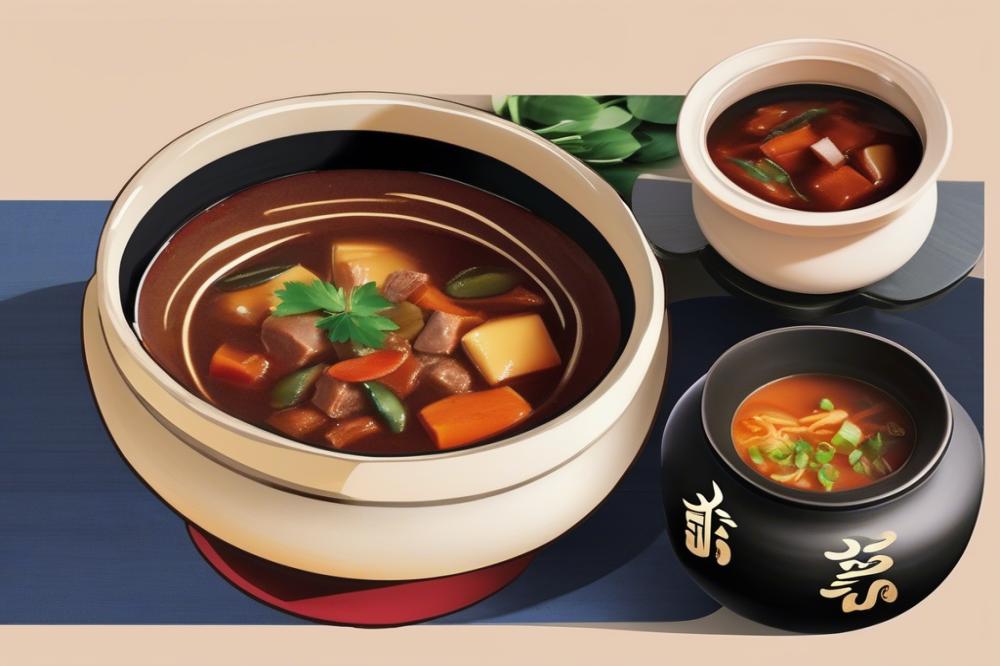The Art of Preparing Cheonggukjang fermented soybean stew
Cheonggukjang is a traditional Korean dish that showcases the art of fermentation in cooking. Known for its strong aroma and rich flavor, this fermented soybean stew is often cherished as a comfort food. Many consider it a staple that embodies the essence of Korean cuisine. Its deep roots in history connect it to home-cooked meals and family gatherings, making it a beloved recipe passed down through generations.
Fermented foods have gained recognition for their health benefits, especially in recent years. Cheonggukjang stands out due to its high content of probiotics, which can support gut health. With the rise in interest concerning healthy recipes, more people are discovering the joys of this savory dish. Plant-based protein from the soybeans makes it not only nourishing but also filling. Soups and stews have a special place in Korean culture, providing warmth during colder seasons. Cheonggukjang perfectly exemplifies the country’s culinary heritage, where cooking techniques have been honed over centuries.
People across the globe are increasingly drawn to fermented foods. These foods offer not just flavors but also various health benefits. As more seek nutritious options, dishes like Cheonggukjang find themselves on many tables, illustrating a blend of tradition and modern dietary trends. Recipes that include fermentation reflect a connection to nature, as well as a desire to promote wellness through eating habits. Everyone can appreciate the importance of incorporating such nutritious and delicious elements into daily meals.
What is Cheonggukjang?
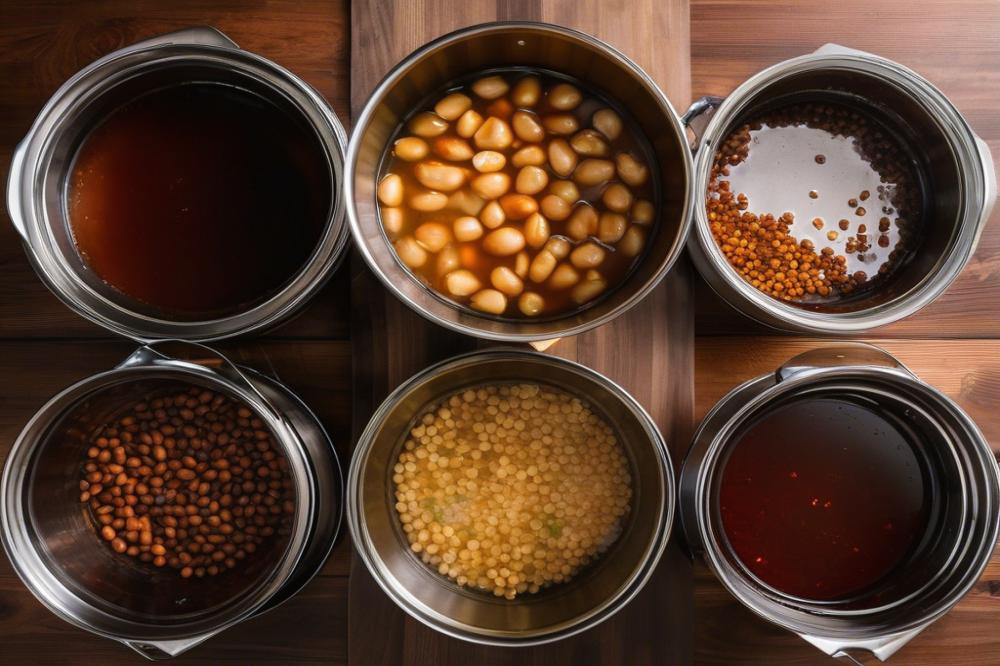
Cheonggukjang is a traditional Korean fermented soybean stew known for its rich flavor and aroma. This dish has deep historical roots in Korean cuisine, dating back centuries. fermented foods like this one highlight the country’s culinary heritage, showing how techniques have evolved over time. Cheonggukjang differs significantly from other popular fermented products, such as Doenjang and Gochujang. While Doenjang is a fermented soybean paste often used in soups and sauces, Gochujang is a spicy red pepper paste. These three staples showcase the diversity within the world of Korean fermentation.
Many families consider this stew to be comfort food. It’s a dish that brings people together, often enjoyed during colder months. In addition, the cultural significance of Cheonggukjang extends beyond mere sustenance. It embodies a way of life that respects natural ingredients and time-honored traditions. The use of fermented soybeans also ties into the health benefits associated with probiotics, which are essential for digestive health. Consuming fermented foods is a healthy choice for those looking to maintain balance in their diet.
Nutritionally, this stew is quite impressive. It serves as a fantastic source of plant-based protein, making it valuable for vegetarian and vegan diets. Cheonggukjang is also packed with vitamins and minerals that support overall well-being. Its rich flavor is complemented by a variety of vegetables often added to the dish. Cooking techniques used to prepare Cheonggukjang can greatly influence its taste and texture. The fermentation process gives it a distinctive character, elevating it above many savory dishes. This unique stew not only nourishes the body but also warms the soul.
Ingredients and Preparation
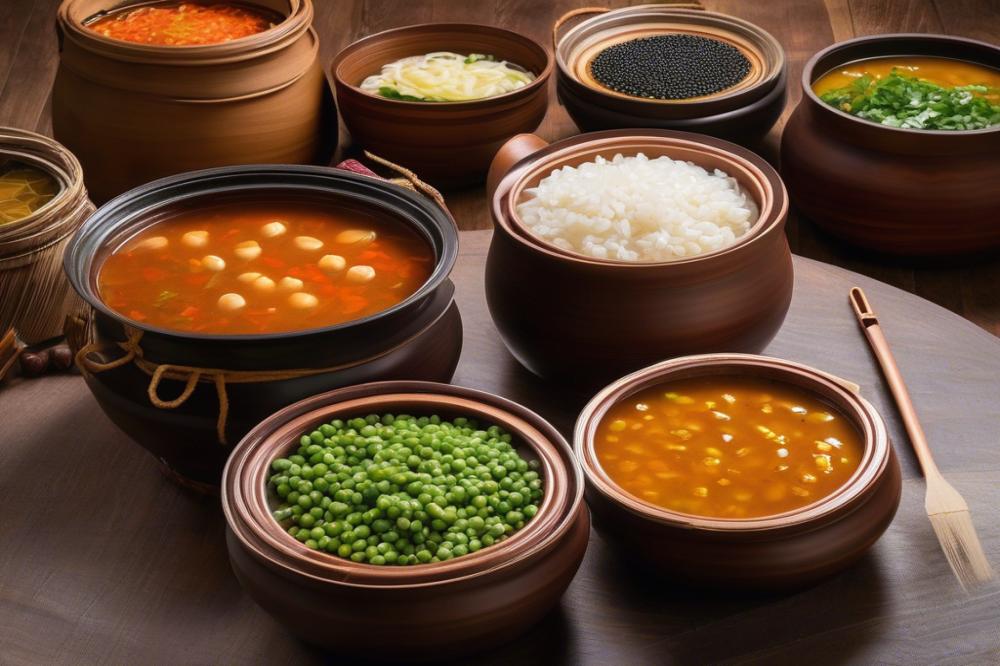
To create a delightful bowl of Cheonggukjang fermented soybean stew, gather the following ingredients:
- 1 cup of Cheonggukjang (fermented soybean paste)
- 4 cups of water or broth
- 1 medium onion, diced
- 1 cup of zucchini, sliced
- 1 cup of mushrooms, sliced (shiitake or enoki recommended)
- 1 cup of tofu, cubed
- 2 green onions, chopped
- 1 tablespoon of minced garlic
- 1 tablespoon of soy sauce
- Optional: red pepper flakes for spice
Preparation is key when making this savory dish. Begin by prepping your ingredients. Dice the onion and chop the green onions. Slice the zucchini and mushrooms; their flavors will meld beautifully in the stew. Cubing the tofu helps it absorb the surrounding flavors. Set all your ingredients within reach, as this makes the cooking process smoother.
Method of Cooking Cheonggukjang Stew
Start by heating a large pot over medium heat. Add a little oil and toss in the minced garlic. Sautéing the garlic will release its aromatic scent; it builds a flavorful base for your stew. Include the diced onion next, cooking until it softens. This usually takes about five minutes.
Next, pour in the water or broth, bringing it to a gentle boil. Once boiling, stir in the Cheonggukjang, dissolving it into the broth. This fermented paste is rich in probiotics, which are beneficial for gut health. The stew is a wonderful example of Korean cuisine and its love for fermented foods.
Add the sliced zucchini and mushrooms to the pot. These vegetables provide freshness and texture, enhancing the overall experience of the dish. When the mushrooms begin to soften, gently fold in the cubed tofu. Allow everything to simmer together for about ten minutes. This is where the flavors meld, creating a comforting stew.
As the cooking time wraps up, stir in the soy sauce for an extra depth of flavor. For those who enjoy a bit of heat, sprinkle in the optional red pepper flakes. Adjust the seasoning as necessary, tasting to find the perfect balance. Finally, serve the stew hot and top it with chopped green onions for a burst of freshness. This dish is not just delicious; it is also a source of plant-based protein.
Nutritional Information
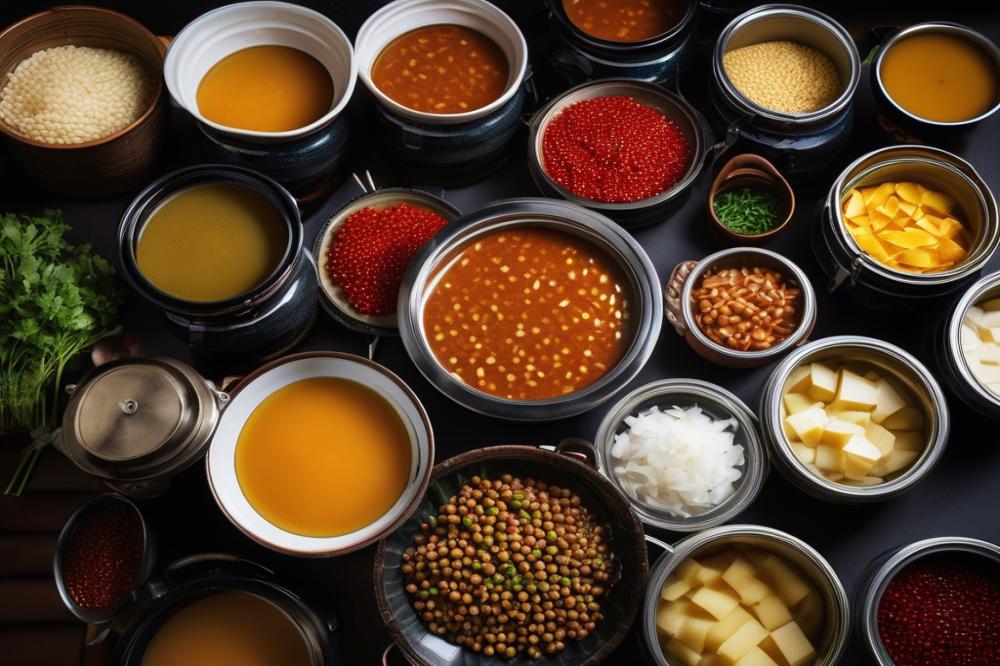
Each ingredient in this spicy stew brings important nutritional values. Fermented soybeans are the base of many traditional recipes. They are rich in protein, providing a substantial amount of plant-based protein. A typical serving delivers around 22 grams of protein, which is essential for building and repairing tissues. Along with protein, they are low in carbohydrates and high in fibers, which help in digestion and keep you feeling full.
Vegetables such as napa cabbage and zucchini add vitamins and minerals. They also introduce more fiber to the dish. Garlic, another common component, adds flavor and offers health benefits. It can boost the immune system and has been linked to lower blood pressure.
Benefits of Plant-Based Proteins in the Stew
Plant-based proteins play a significant role in maintaining health. They support muscle growth and can reduce the risk of chronic diseases. A diet rich in such proteins is often lower in saturated fats compared to animal proteins. This quality enhances heart health and can contribute to weight management.
Overview of Probiotics and Their Role in Gut Health
Fermented foods are known for their probiotic content. Probiotics are live bacteria that are beneficial for gut health. They can improve digestion and enhance nutrient absorption. When consuming dishes that include fermented soybeans, one gets a dose of these good bacteria. This helps in maintaining a balanced gut microbiome, which is essential for overall wellness.
Discussion on the Stew as Comfort Food
This savory dish serves as a comforting meal for many. The rich flavors and warming nature make it ideal for cold days. It evokes memories of family gatherings and hearty dinners. Preparing a stew often brings friends and loved ones together. The techniques used create depth in flavor, making each spoonful enjoyable.
Korean cuisine proudly features this dish for its wholesome ingredients. Comfort food often provides more than just nourishment; it ties to culture and tradition. Everyone deserves a warm bowl of a delicious stew that nourishes both body and soul.
Cooking Techniques and Tips
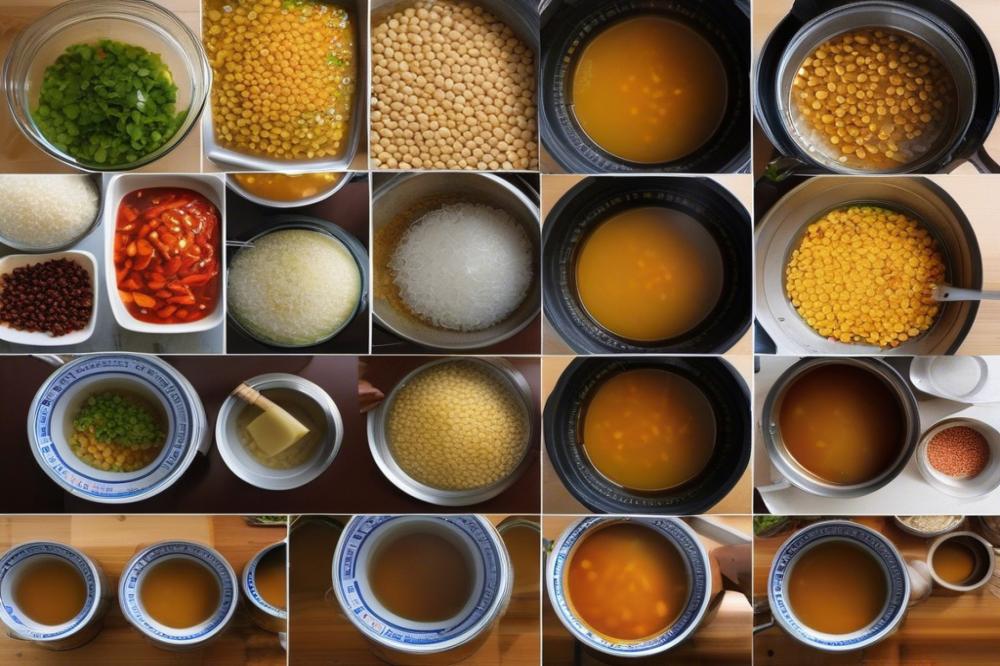
Making a delicious stew can be a rewarding experience. To preserve the flavor and nutrients, gentle cooking methods work best. Simmering the soup rather than boiling it helps keep the probiotics alive. Lower temperatures let the ingredients release their natural flavors without losing healthy properties. Using a heavy-bottomed pot can also help distribute heat evenly.
Adjusting your stew’s consistency can enhance its appeal. If you prefer a thicker texture, consider mashing some beans or adding a bit of blended tofu. Adding more broth or water can thin it out if it becomes too dense. Be mindful of your taste; adding a dash of soy sauce or a pinch of salt will help elevate the flavor without overpowering the dish.
Ingredient substitutions can maintain the spirit of traditional recipes while offering variety. If you cannot find certain vegetables, feel free to use what’s available in your kitchen. For a boost of plant-based protein, consider incorporating lentils or chickpeas. Fresh herbs like cilantro or green onions can add a burst of flavor, too.
The role of fermentation in preparing stews is significant. Fermented foods are rich in probiotics, which support gut health. Incorporating fermented ingredients into your dish not only boosts nutrition but also adds depth of flavor. Many find that fermenting soybeans creates a unique taste that perfectly complements various savory dishes. Embracing the art of fermentation can turn a simple stew into a comforting, healthy meal.
Serving Suggestions and Variations
Traditional Ways to Serve Cheonggukjang Stew
Cheonggukjang stew is a staple in Korean cuisine. The dish has deep-rooted history and is often enjoyed in homes across Korea. Traditionally, it is served hot and bubbling, bringing warmth and comfort to the table. People usually enjoy this stew with a bowl of steamed rice. Adding rice makes the meal heartier and helps balance the strong flavors. This stew pairs well with kimchi, making it a perfect match for those who love fermented foods.
Pairing with Rice or Side Dishes
Rice is not the only option. Many families also present a variety of side dishes called banchan. Each table may feature vegetables, pickles, or other savory dishes. These small plates enhance the meal’s overall experience. The mild flavors of the side dishes complement the rich taste of the stew, creating a harmonious mix. A simple cucumber salad can add a refreshing touch, while savory pancakes can bring a delightful crunch.
Variations and Creative Adaptations of the Stew
Variations abound for this fermented stew. Some people choose to add mushrooms or green onions for extra flavor and texture. Others might include seafood, such as clams or shrimp, to give a unique twist. Adding tofu increases the plant-based protein and makes the dish even more nourishing. You can also experiment by integrating different vegetables like zucchini or carrots. Healthy recipes often highlight seasonal ingredients, enhancing taste and nutrition.
Personal Anecdotes or Regional Differences if Relevant
In various regions of Korea, family traditions influence how the stew is prepared. People in Busan might enjoy a spicier version, while those from Seoul may prefer a milder taste. Personal stories often revolve around family gatherings centered around this dish. Many remember childhood memories of cooking with family members. These experiences create a connection to the food that lasts a lifetime. Generational variations bring richness to traditional recipes, making every stew unique to its maker.
Final Thoughts on Cheonggukjang and Fermented Foods
Korean cuisine holds a special place for dishes that celebrate tradition and flavor. Cheonggukjang, with its rich history, showcases the artistry of fermentation. Not only does this dish deliver a depth of taste, but it also packs a punch when it comes to nutrition. Many view it as a comfort food, providing warmth on cold days and nourishment for the body. It connects generations, bringing families together over a shared meal.
Giving it a try in your own kitchen can be an exciting adventure. Making this stew isn’t just about following a recipe; it’s about embracing a process steeped in culture. As you mix the ingredients and let them come together, you’ll gain a deeper appreciation for the flavors. The experience of cooking can lead to a greater understanding of the importance of fermented foods and how they enrich our diets.
Embracing these traditional tastes can open up a world of culinary exploration. The benefits of fermented foods extend beyond just delightful flavors. They bring health benefits, contributing to gut health and overall well-being. Enjoyment comes not only from tasting the final dish but also from seeing how these ingredients transform in your hands. So, gather your family or friends, roll up your sleeves, and start this journey into Korean cuisine. You may discover that creating Cheonggukjang at home is a joy worth every moment spent.

